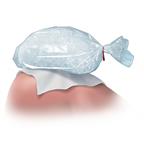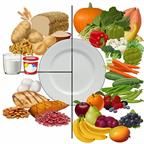Managing Pain Without Opioids
Opioids are strong medicines used to treat moderate to severe pain. For some people, especially those who have long-term (
chronic) pain, opioids may not be the best choice for pain management due to:
Side effects like nausea, constipation, and sleepiness.
The risk of addiction (opioid use disorder). The longer you take opioids, the greater your risk of addiction.
Pain that lasts for more than 3 months is called chronic pain. Managing chronic pain usually requires more than one approach and is often provided by a team of health care providers working together (multidisciplinary approach). Pain management may be done at a pain management center or pain clinic.
How to manage pain without the use of opioids
Use non-opioid medicines
Non-opioid medicines for pain may include:
Over-the-counter or prescription non-steroidal anti-inflammatory drugs (NSAIDs). These may be the first medicines used for pain. They work well for muscle and bone pain, and they reduce swelling.
Acetaminophen. This over-the-counter medicine may work well for milder pain but not swelling.
Antidepressants. These may be used to treat chronic pain. A certain type of antidepressant (tricyclics) is often used. These medicines are given in lower doses for pain than when used for depression.
Anticonvulsants. These are usually used to treat seizures but may also reduce nerve (neuropathic) pain.
Muscle relaxants. These relieve pain caused by sudden muscle tightening (spasms).
You may also use a pain medicine that is applied to the skin as a patch, cream, or gel (topical analgesic), such as a numbing medicine. These may cause fewer side effects than medicines taken by mouth.
Do certain therapies as directed

Some therapies can help with pain management. They include:
- Physical therapy. You will do exercises to gain strength and flexibility. A physical therapist may teach you exercises to move and stretch parts of your body that are weak, stiff, or painful. You can learn these exercises at physical therapy visits and practice them at home. Physical therapy may also involve:
Massage.
Heat wraps or applying heat or cold to affected areas.
Electrical signals that interrupt pain signals (transcutaneous electrical nerve stimulation, TENS).
Weak lasers that reduce pain and swelling (low-level laser therapy).
Signals from your body that help you learn to regulate pain (biofeedback).
Occupational therapy. This helps you to learn ways to function at home and work with less pain.
Recreational therapy. This involves trying new activities or hobbies, such as a physical activity or drawing.
- Mental health therapy, including:
Cognitive behavioral therapy (CBT). This helps you learn coping skills for dealing with pain.
Acceptance and commitment therapy (ACT) to change the way you think and react to pain.
Relaxation therapies, including muscle relaxation exercises and mindfulness-based stress reduction.
Pain management counseling. This may be individual, family, or group counseling.
Receive medical treatments
Medical treatments for pain management include:
Follow these instructions at home
Medicines
-
Take over-the-counter and prescription medicines only as told by your health care provider.
-
If you are taking pain medicine, ask your health care providers about possible side effects to watch out for.
-
Do not drive or use heavy machinery while taking prescription opioid pain medicine.
Lifestyle

-
Do not use drugs or alcohol to reduce pain. If you drink alcohol, limit how much you have to:
-
Do not use any products that contain nicotine or tobacco. These products include cigarettes, chewing tobacco, and vaping devices, such as e-cigarettes. If you need help quitting, ask your health care provider.
- Eat a healthy diet and maintain a healthy weight. Poor diet and excess weight may make pain worse.
Eat foods that are high in fiber. These include fresh fruits and vegetables, whole grains, and beans.
Limit foods that are high in fat and processed sugars, such as fried and sweet foods.
- Exercise regularly. Exercise lowers stress and may help relieve pain.
Ask your health care provider what activities and exercises are safe for you.
If your health care provider approves, join an exercise class that combines movement and stress reduction. Examples include yoga and tai chi.
-
Get enough sleep. Lack of sleep may make pain worse.
-
Lower stress as much as possible. Practice stress reduction techniques as told by your therapist.
General instructions
-
Work with all your pain management providers to find the treatments that work best for you. You are an important member of your pain management team. There are many things you can do to reduce pain on your own.
-
Consider joining an online or in-person support group for people who have chronic pain.
-
Keep all follow-up visits. This is important.
You can find more information about managing pain without opioids from:
Contact a health care provider if:
-
You have side effects from pain medicine.
-
Your pain gets worse or does not get better with treatments or home therapy.
-
You are struggling with anxiety or depression.
Summary
-
Many types of pain can be managed without opioids. Chronic pain may respond better to pain management without opioids.
-
Pain is best managed when you and a team of health care providers work together.
-
Pain management without opioids may include non-opioid medicines, medical treatments, physical therapy, mental health therapy, and lifestyle changes.
-
Tell your health care providers if your pain gets worse or is not being managed well enough.
This information is not intended to replace advice given to you by your health care provider. Make sure you discuss any questions you have with your health care provider.
 Some therapies can help with pain management. They include:
Some therapies can help with pain management. They include: